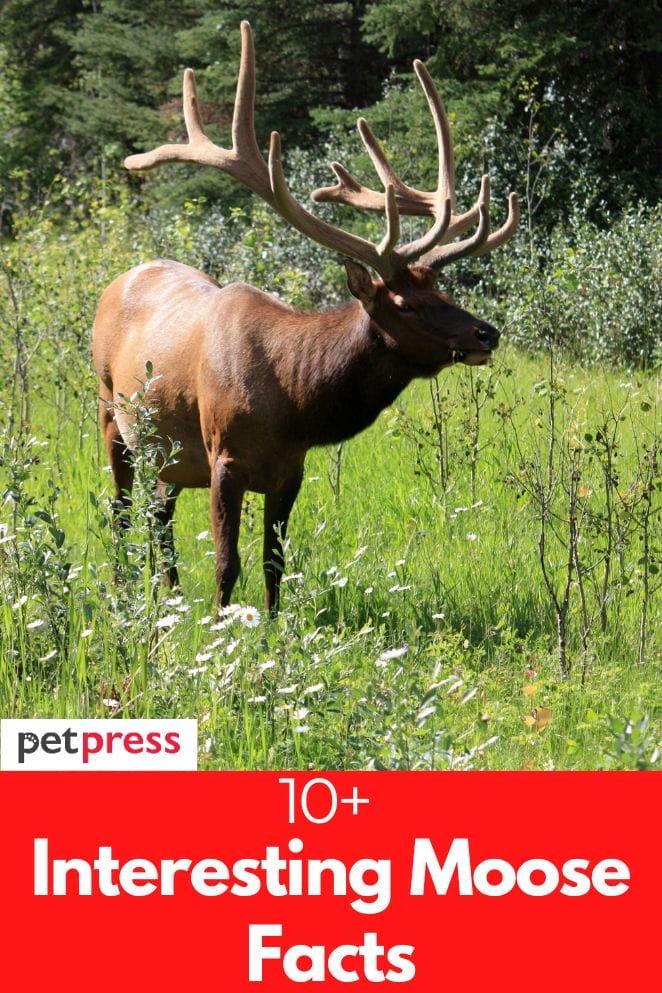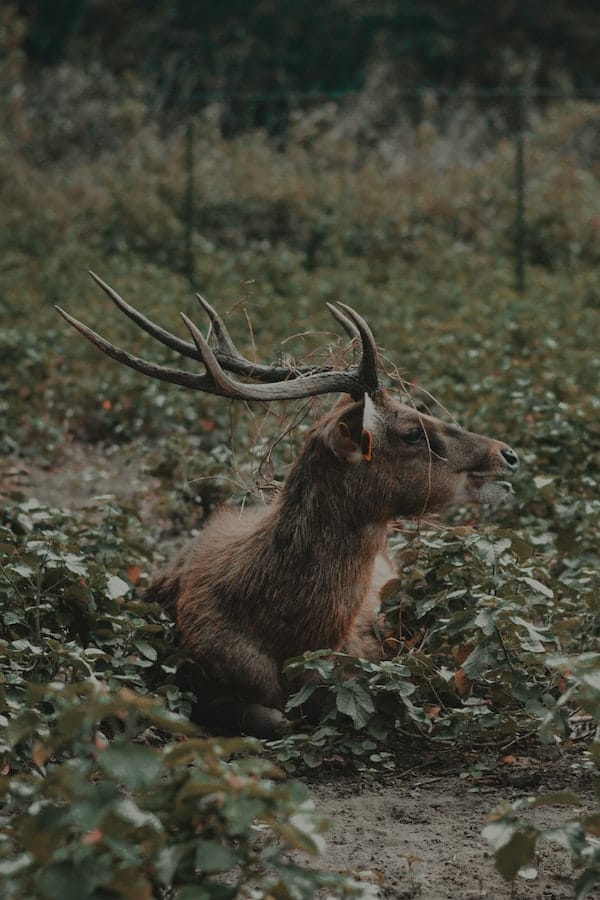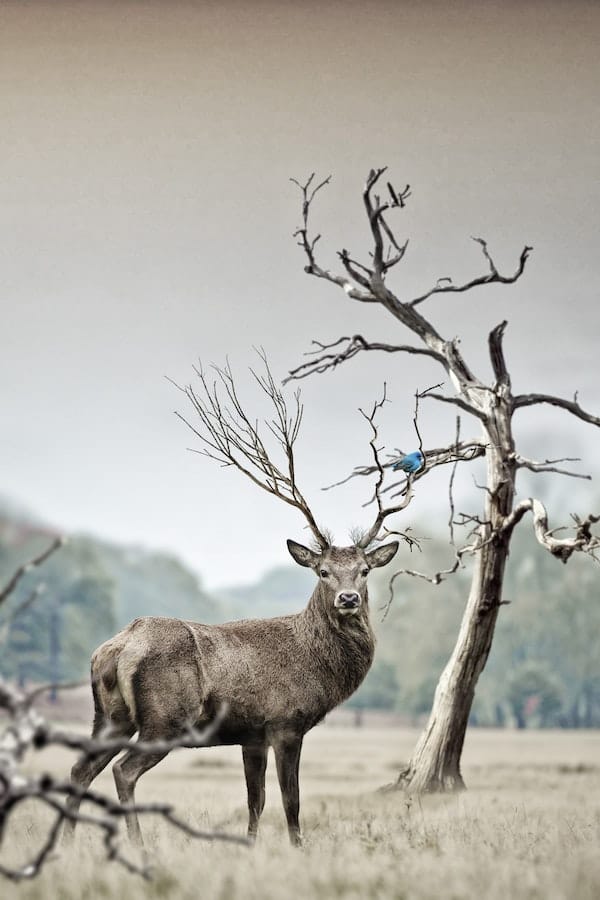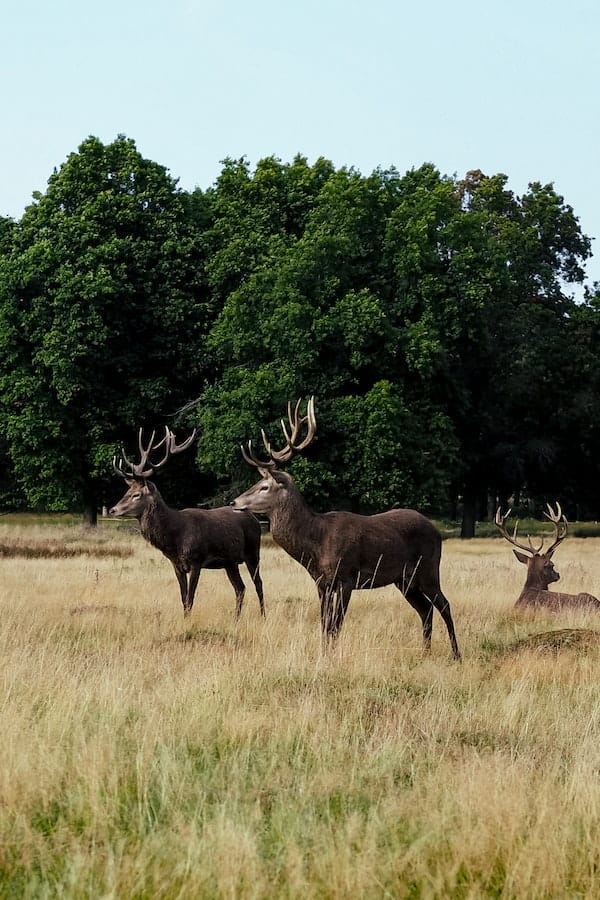
Moose are large mammals native to the northern hemisphere.
Capable of reaching up to 1,800 pounds in weight and standing over 6 feet tall at the shoulder, moose have long been an icon of the Canadian wilderness.
Despite their widespread presence across North America and Europe, there is still much to learn about these majestic creatures.
Here are some interesting facts about moose that may surprise you!
Fact #1: Moose have incredibly good hearing.
Moose have very large ears compared to their body size and possess an acute sense of hearing.
They can detect sound from great distances in both the low and high-frequency range, allowing them to locate predators or locate food sources.
Their acute hearing is believed to be one of the ways that they can detect danger even when it’s too far away to see.
In addition, moose can move their ears in different directions independently of each other to determine the direction of sound sources.
This helps them when they are foraging for food or trying to identify the location of potential predators.
Fact #2: Moose can swim.
Moose are excellent swimmers, although they prefer walking and running on land.
Moose have long legs that allow them to paddle through the water with ease.
They can even reach speeds of up to 6 miles per hour while swimming. This is an impressive feat considering their immense body size.
Moose can swim for up to two hours at a time in order to reach new feeding grounds or cross rivers and streams.
Once they are out of the water, they will often use their long legs to run over the land in search of new food sources or potential mates.
Fact #3: Moose have an incredible sense of smell.

Moose have a very good sense of smell, allowing them to detect scents from great distances.
This is important for the moose as it helps them to find food sources, identify potential predators and even locate mates.
Their keen sense of smell also helps them to recognize other moose that they have interacted with in the past, allowing them to form social bonds and maintain friendships.
This is an important tool for the moose since it allows them to identify potential threats and avoid predators.
Fact #4: Moose shed their antlers every year.
Moose are unique among mammals in that they shed and regrow their antlers annually.
The process of shedding and regrowing happens over a period of several months and is thought to be connected to changes in hormone levels during the mating season.
During this time, the moose’s antlers will become larger and heavier before eventually falling off.
The moose then takes a few months to regrow the antlers before they are ready for shedding again.
This cycle of growth is an important part of a mature male moose’s life, as the antlers help him to compete with other males during the mating season.
Fact #5: Moose has a very large range.
Moose are found in many countries across the northern hemisphere, with some populations extending as far south as California and New Mexico in the United States.
They can be found in Canada, Alaska, Scandinavia, and northern parts of Europe.
In addition to their wide geographical range, moose have been known to inhabit many different habitats, from boreal forests to mountain meadows.
They are well adapted for life in these areas and can survive long winters with temperatures as low as -60°C.
With so much variety across their range, it’s no wonder that moose remain such a successful and iconic species throughout their large range.
Fact #6: Moose have few natural predators.
Moose are extremely large animals, which makes them difficult for most predators to take down.
Their primary predators are wolves, bears, and sometimes even humans.
These predators will hunt moose, but only in packs or if the animal is injured or weakened.
Moose also has an excellent defense system; when threatened, they can use their large antlers to defend themselves from attackers.
Furthermore, due to their size, moose can easily defend themselves against smaller predators like coyotes and foxes.
All of these factors mean that moose have few natural predators, allowing them to remain a successful species even in the face of human encroachment.
- Related post: Good and Famous Names For a Moose
- Related post: Top 14+ Inspiring Moose Tattoo Ideas and Designs
Fact #7: Moose have long fur that helps keep them warm.

Moose have a thick coat of fur which helps to keep them warm in cold climates.
This fur can range in color from tan or brown to grey and black, depending on the moose’s age and the region it inhabits.
The fur is made up of two layers: an undercoat that keeps the animal insulated from cold temperatures and a longer outer coat that helps to protect the moose from rain and snow.
This extra layer of protection has enabled moose to survive in areas with extremely cold temperatures, such as the Arctic tundra.
The fur also provides camouflage against predators so that they can remain hidden and safe even in open areas.
Fact #8: Moose are herbivores.
Moose are strictly herbivorous, meaning they consume only vegetation and other plant matter for their diet.
Their dietary preferences include both aquatic and terrestrial plants, such as grasses, shrubs, leaves, twigs, bark, aquatic vegetation, and even some fruits.
Moose are well adapted to their diet and can digest a wide variety of plant matter.
They also have large cheeks, which help them store food when there is an abundance available during the warmer months.
The ability to consume such a wide variety of plants helps moose survive in many different habitats across the northern hemisphere.
Fact #9: Moose are solitary animals.
Moose are typically solitary creatures and will usually only come together in groups during the mating season.
Typically, a single bull moose will have its own territory that it marks with scent glands and rubs from its antlers.
During the breeding season, bulls will fight over the best territories and mate with multiple cows.
During the rest of the year, however, most moose prefer to keep to themselves and will rarely interact with other members of their species.
This means that when there is a sighting of moose in a certain area, it’s likely that more than one animal is present.
Fact #10: Moose are vocal animals.

Moose have a variety of vocalizations that they use to communicate with each other and express their emotions.
During the mating season, males will emit loud bellowing calls in order to attract females and ward off other males.
In addition to these bellows, moose also make snorting and grunting noises when threatened or startled.
They might also bark or whistle if they feel happy and content. All of these vocalizations have been documented in the wild and help us better understand moose behavior and communication.
Fact #11: Moose populations are declining.
Moose populations across the world are in decline due to a variety of factors, including hunting and habitat destruction.
In some areas, their numbers have diminished by as much as 50%. There is also evidence that climate change is having a negative effect on moose populations.
Rising temperatures and changing precipitation patterns can make it more difficult for the animals to find food, shelter, and mates in their natural habitats.
Conservation efforts have been implemented in some areas to help improve habitat conditions and prevent further population decline.
However, conservationists are still concerned about the future of moose populations worldwide.
Overall, moose are fascinating and unique animals.
They have adapted to survive in many different habitats, and their vocalizations help them communicate with each other.
Unfortunately, their populations are declining due to human activities and climate change, which is why preserving these majestic creatures is so important.


GIPHY App Key not set. Please check settings